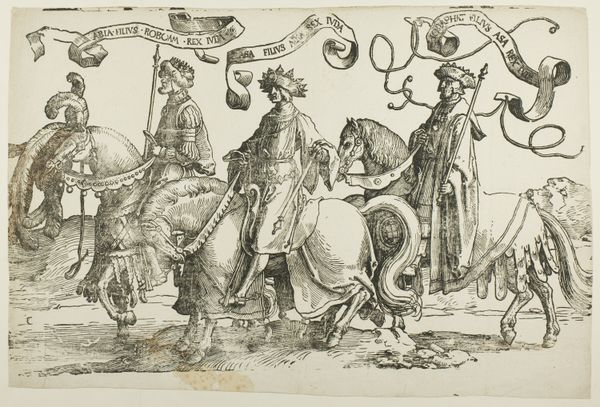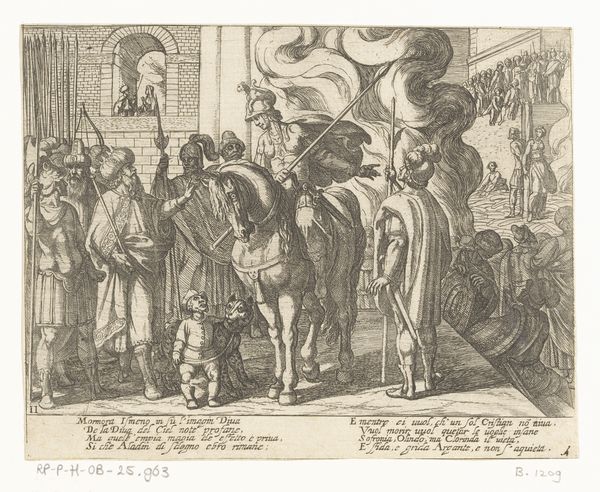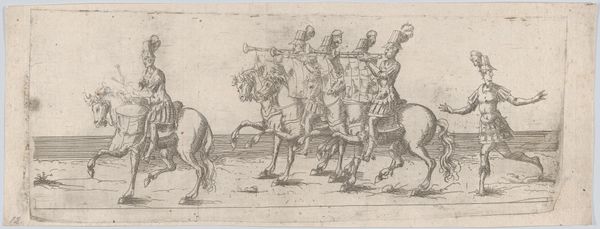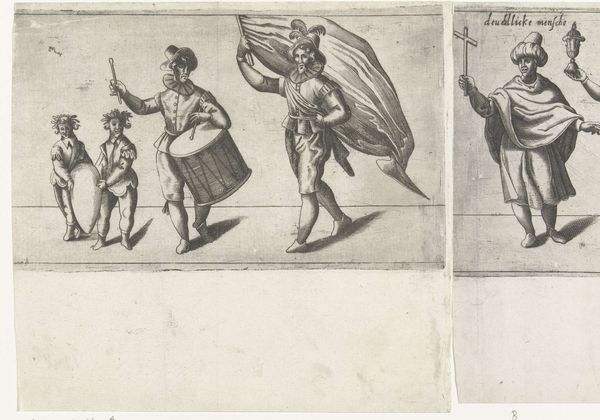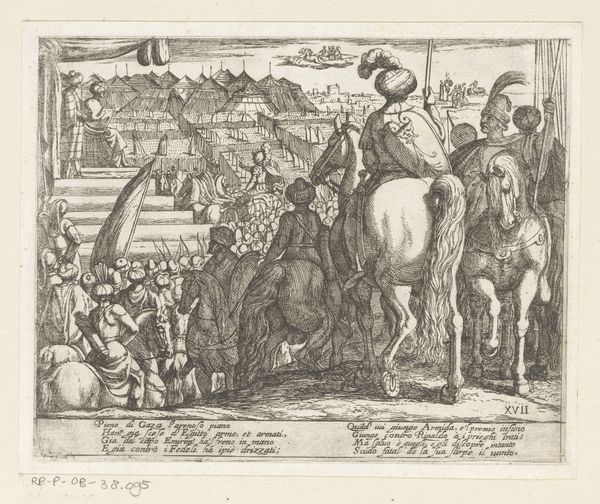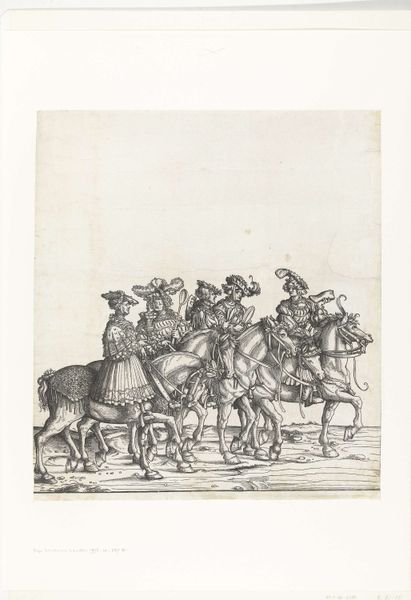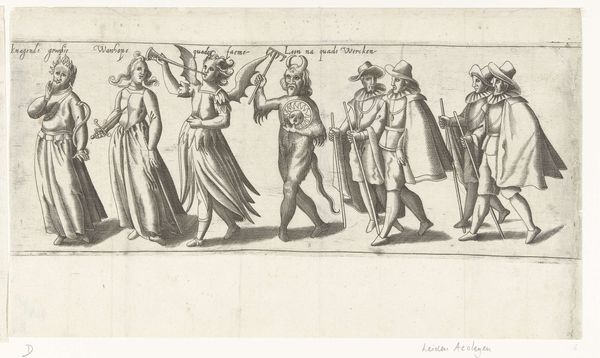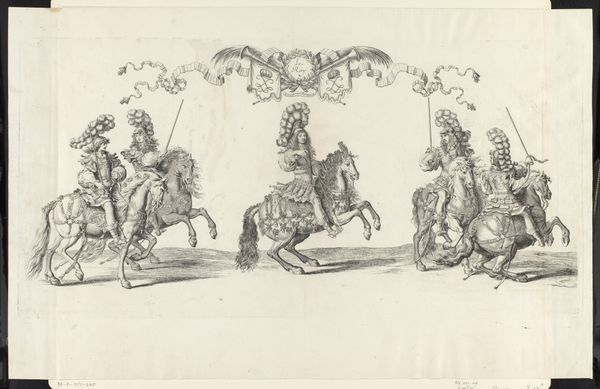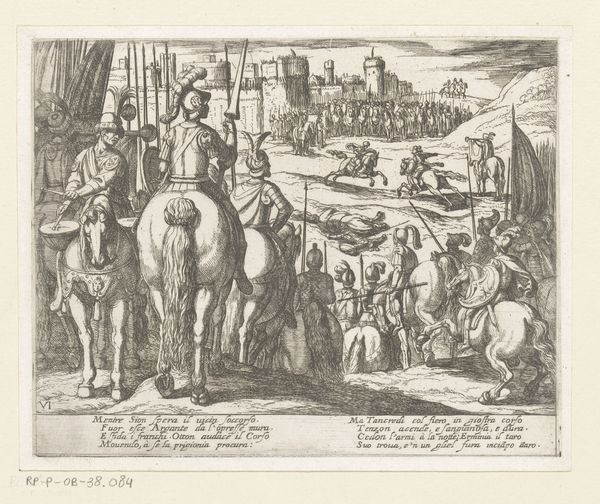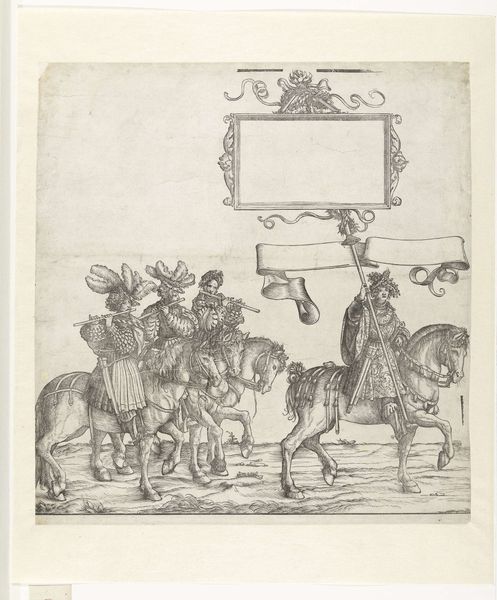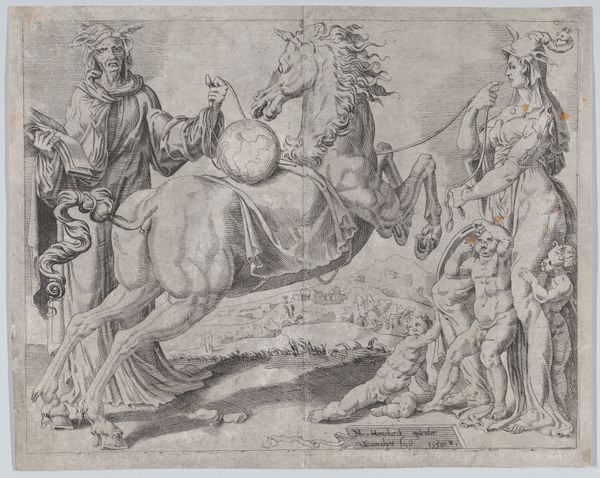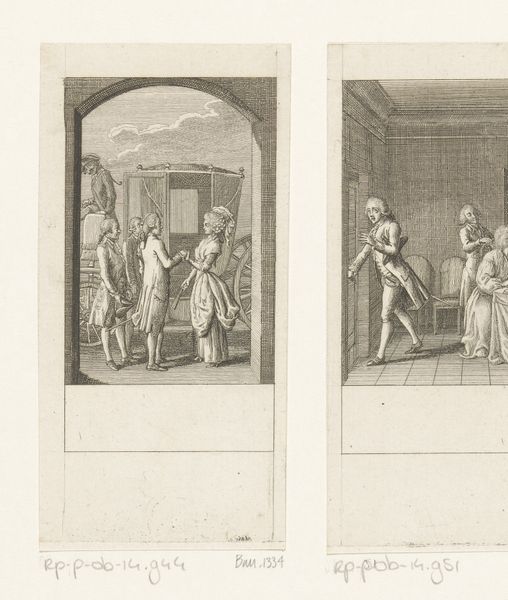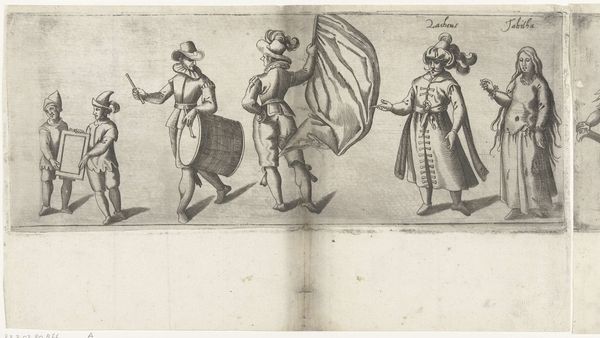
Optocht door de Brabantse rederijkerskamer Het Lavenderblomken uit Amsterdam (derde deel), 1607 1607
0:00
0:00
drawing, print, ink, pen, engraving
#
drawing
#
narrative-art
#
baroque
# print
#
pen sketch
#
ink
#
ink drawing experimentation
#
group-portraits
#
pen-ink sketch
#
pen
#
genre-painting
#
engraving
Dimensions: height 205 mm, width 410 mm
Copyright: Rijks Museum: Open Domain
Curator: Immediately, I am struck by the ordered procession, yet there's a curious sense of the mundane about it. It seems stiff, and I'm curious about its function. Editor: Here we have a piece titled "Procession of the Brabant Chamber of Rhetoric The Lavender Flowers from Amsterdam (third part)", crafted in 1607. It is presented as an engraving, showcasing the parade participants in a very ordered manner. Curator: The figures seem almost regimented in their groupings, with their sombre yet detailed clothing rendered in ink and pen, offering texture with fine strokes and lines. One might find it an early record or visual documentation, wouldn’t you agree? What do you think about the choice of the pen-ink for something as relevant as recording an important chamber’s activities? Editor: Indeed. The print medium suggests a distribution method, making the visual information available to a wide viewership beyond those who attended. These engravings made this parade, with all of its messaging, a consumable item, one that reinforced the values of labor, production, and the civic responsibilities embraced by this group. Note the presence of the horse being led at the center, for example. It may have functioned as both transport and symbolic stagecraft for the depicted narrative. Curator: Focusing on visual aspects for a moment, let’s analyze this interesting choice of line weight and composition. Note that they used more ink in clothes and characters. Also note how much depth the artist was able to create using thin, delicate hatching lines and carefully orchestrated areas of solid darkness! Look how they use light and dark to separate these people to emphasize each figures’ importance for the general composition. The balanced arrangements with groupings—almost portraits—certainly speak to some effort for documentation but artistic representation as well. Editor: And the subject speaks directly to my area of study. The print's reliance on allegory and personification mirrors the rhetoric of the chamber itself, emphasizing societal virtues and conveying morality, shaped and consumed in Amsterdam's dynamic socio-political scene. We could research the symbolic materials within, from textiles to handheld items to learn even more! Curator: Looking at it from a more purely formal standpoint, I find it is the contrast—the balance between detail and the emptiness of the background. It really allows our focus to land firmly on these participants in the parade and creates an almost floating feeling to them, doesn't it? It allows one to feel both intimate with and distant from the scene. Editor: I find your take very refreshing. Ultimately, pieces like these allow one to feel closer to this long-lost event as it speaks of cultural identity and material conditions tied with Amsterdam. Thank you for these amazing insights on the formal construction!
Comments
No comments
Be the first to comment and join the conversation on the ultimate creative platform.

